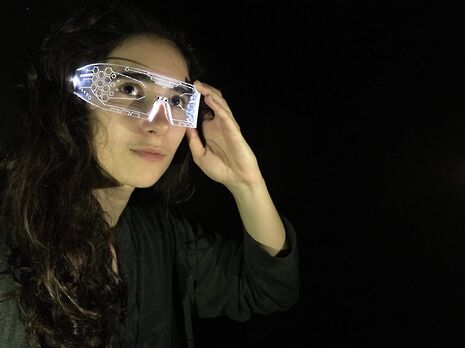Doctor Faustus preview
Alice Brewer watches a production that pulls Marlowe’s famous tragedy into the 21st century

Christopher Marlowe – putative atheist and homosexual, who died in a pub brawl in 1593 – probably wrote Doctor Faustus in the late 1580s. The play is based on the German Faust legend, in which a bored and ambitious scholar at Wittenberg University decides to use magic to conjure the devil. Having been successful, he makes a deal with Mephistopheles, an agent of the devil, exchanging his damnation for 24 years of boundless knowledge, wealth and sex.
The play has a bit of a fraught textual history. There are two versions: an A-text, a quarto produced in 1604, and a B text, produced in 1616. (Note these are both posthumous, which further adds to the mystique around Marlowe’s actual beliefs, a much-debated topic in early modern scholarship.) The A-text was chosen, due to its more ambiguous ending.
Instead of reading books on necromancy, Faustus reads books on how to build a virtual reality headset
This production promises to be a creative reenactment of Marlowe’s dramatic interrogation of the seductive nature of the spectacle; it doesn’t aim to be didactic about the moral implications of being enamoured with images, but rather just show how the implications of an Elizabethan play can be made relevant to the contemporary world. It will be an obvious modernisation: instead of reading books on necromancy, Faustus reads books on how to build a virtual reality headset, and this conjures up Mephistopheles. Atlanta Hatch and Lottie Reeder – director and assistant director respectively – were interested in how the magical elements of the play – the conjuring of spirits and images – are today realities by virtue of new technologies.
The production largely sticks to the text, although it brings out certain elements that might be skipped over in other versions. The instruction of ‘dancing’ in the scenes in which Mephistopheles conjures up images for Faustus to enjoy is emphasised. Playing to Hatch’s strength as a dancer herself, this furthers the portentous and dark register of the play, as well as being highly entertaining in its own right.
Equally, the play’s sub-plot – in which Faustus’s efforts to summon the devil are parodied by two stock ‘idiot’ characters – has been retained. This adds comic relief to the occult darkness of the play, and adds to the farcical, cartoonish nature of Marlowe’s work. In short, this production promises to emphasise the appeal and the treachery of images, and aims to bring out its relevance to the 21st century.
 News / Caius mourns its tree-mendous loss23 December 2025
News / Caius mourns its tree-mendous loss23 December 2025 News / Clare Hall spent over £500k opposing busway 24 December 2025
News / Clare Hall spent over £500k opposing busway 24 December 2025 Comment / Yes, I’m brown – but I have more important things to say22 December 2025
Comment / Yes, I’m brown – but I have more important things to say22 December 2025 Interviews / Politics, your own way: Tilly Middlehurst on speaking out21 December 2025
Interviews / Politics, your own way: Tilly Middlehurst on speaking out21 December 2025 Comment / The ‘class’ of Cambridge24 December 2025
Comment / The ‘class’ of Cambridge24 December 2025








